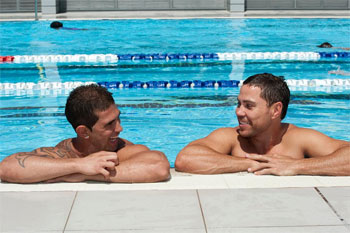Closing the Gap: Physical Activity in Indigenous Communities

Closing the Gap: Physical Activity in Indigenous Communities
The first full week of July every year signifies NAIDOC Week – a time to celebrate Aboriginal and Torres Strait Islander history, culture and achievements. This week is also an opportunity to recognise the contributions that Indigenous Australians make to our country and our society.
Since 2006, Australia's peak Indigenous and non-Indigenous health bodies and human rights organisations have worked together to achieve health and life expectation equality for Australia's Aboriginal and Torres Strait Islander peoples and close the gap.
Information from the 2004-2005 National Aboriginal and Torres Strait Islander health survey (NATSIHS) revealed that three-quarters (75%) of Indigenous people reported sedentary (very low or no physical activity) or low levels of physical activity. This level was 1.5 times higher than that found among non-Indigenous people.
With physical inactivity accounting for 8.4% of the health burden among Indigenous people, Exercise & Sports Science Australia (ESSA) is challenging the Australian Government to invest in activities and services to continue closing this health gap.
'By integrating more Accredited Exercise Physiologists (AEPs) in to Indigenous communities, physical activity services can be utilised as a preventative measure for chronic conditions and diseases, such as coronary heart disease, kidney disease, diabetes and mental health," says ESSA Chief Executive Officer, Anita Hobson-Powell.
Alex Budlevskis, an accredited exercise physiologist working in an Aboriginal Community Controlled Health Organisation (ACCHO), also explains that exercise therapy has the potential to directly treat all of the most common health conditions experienced within the Aboriginal community.
'If the service also supports discussion of healthy eating habits, and encourages greater social connection, this simple activity can address physical, emotional and social well-being concurrently."
'The input of an AEP is crucial to address complex and competing health needs, including various comorbidities, medications and health histories. This ensures that exercise is not only effective but safe," notes Mr. Budlevskis.
'This service has the potential to not only close the Indigenous health gap, but to supersede it entirely. I challenge the government health departments, if they are genuinely interested in closing the Indigenous health gap, then they need to financially support more programs such as this. Programs that are community controlled, staffed by Aboriginal health workers, and made culturally appropriate for the Aboriginal community."
To find out more about NAIDOC Week, please click here.
To locate your local AEP, please click here.
MORE



